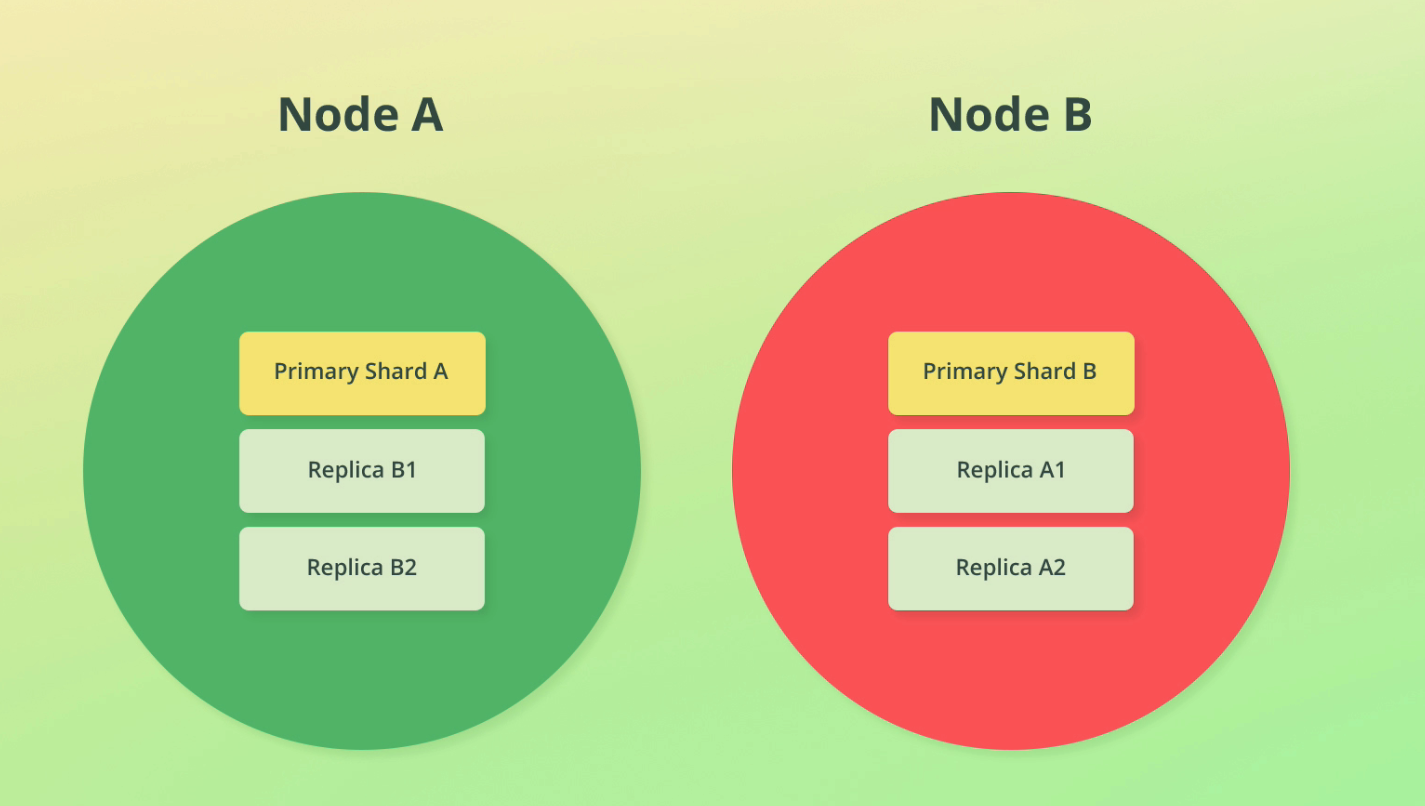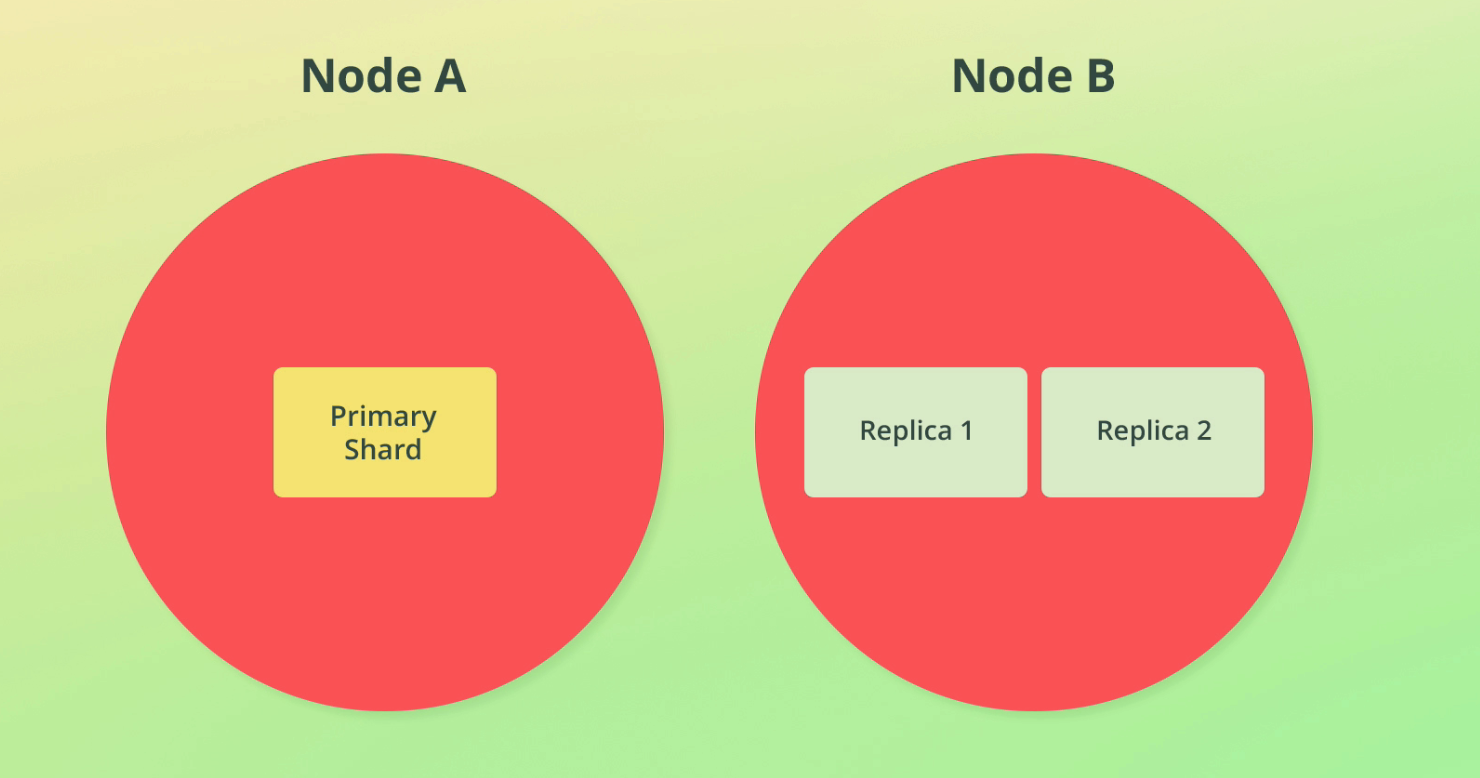Replication
Replication in ES is the process of duplicating data for the purpose of fault tolerance to avoid losing data.
Replication is done at the index level and involves creating a copy of shards, called replica shards. A replicated shard is a primary shard.

If we replicate shards across nodes, we can introduce fault tolerance if the nodes are on different machines. See this discussion on single server vs multi server implem.
Replicate shards once for non critical systems, replicate twice for critical systems
A replica is never allocated to the same node as its primary shard. If we only have 1 node and we create a replica, that index will have nowhere to go, so it will get a YELLOW status
To see a list of shards use the following command:
GET /_cat/shards?v&index=*,-.*,-.internal.*,-.*default*
(note the query params are for only showing non-internal indices)
Output:

We can see the replica shard is unallocated because we only have 1 node.
Replication group
A replication group is simply a primary shard's replicas and the primary shard as well.

Throughput
Replication can also help with throughput. A replica shard can be queried just like a primary shard (in fact, ES will route requests to the best shard to query).
Below you can see we have three shards across two nodes - this means if 3 requests come through at once, we can spread the load across the shards and achieve parallelization.

Snapshots
Snapshots allow backups to a point in time. They can snapshot:
- Specific indices
- Clusters
Replication is best for fault tolerance for the current state, whereas snapshots are best for historical backups and getting things back to a working state.